The Yosemite Quadruple: A New Frontier
Yosemite Valley has long been a mecca for climbers, with a history that dates back to the early 20th century. Pioneers like Royal Robbins and Warren Harding laid the groundwork for modern big wall climbing, with their groundbreaking ascents of El Capitan and other iconic routes. Over the decades, climbers like Alex Honnold and Tommy Caldwell have continued pushing the boundaries, setting new records and achieving feats once thought impossible.
Tanner Wanish and Michael Vaill are part of a new generation of big wall climbers looking to build on the storied history of the sport and at the same time, carve out a space of their own. Most recently, the duo set a new speed record for climbing the Yosemite Triple Crown in less than 18 hours. Building on this achievement, their latest feat is as audacious and groundbreaking as any in climbing.
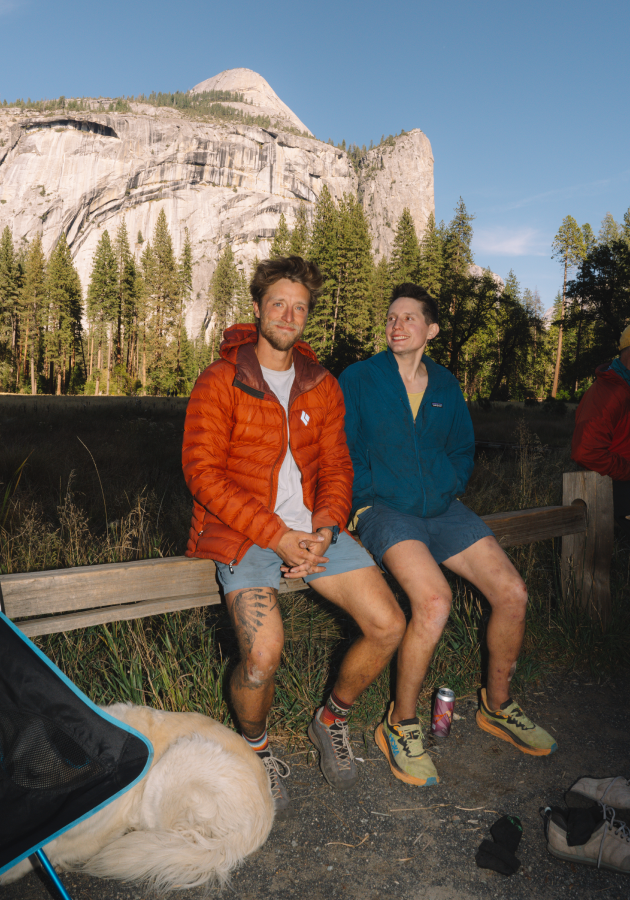
Tanner Wanish and Michael Vaill (Photo Credit: John Kasaian)
For some, snagging that first ascent and getting their name in guidebooks is the ultimate prize. For Tanner and Michael, it’s all about shattering the limits of what's possible, blazing trails no one's dared before. Their drive is rooted in the challenge itself and paving the way for future climbers to dream even bigger.
This is what the Yosemite Quadruple was all about.
COROS had a chance to interview Tanner about this latest achievement and the unique challenges the Yosemite Quadruple presented.
What is the Yosemite Quadruple?
The Quad is four of the biggest walls in Yosemite in under 24 hours. The walls are Mt. Watkins South face, The Nose on El Capitan, The South face of Washington Column, and The Regular Northwest face of Half Dome. Time starts when the first climber begins the first wall and finishes when the second climbers summits the last wall and in theory can be done in any order.
Do you know of anyone or team that has attempted these climbs in a 24-hour period?
I don't think so, as far as we know, this is a first! Which is so cool because it feels like all the big stuff has already been done, it was so inspiring to be able to expand on the vision of the previous generation and push the sport forward, any amount.
How would you best describe yourself as a climber?
Stoked! Beyond anything else, I am just so excited and grateful for the experience every time I am able to get outside and climb no matter what we're doing. I absolutely love the opportunity to utilize both body and mind to problem solve in these really engaging ways, it's such an addicting simplicity and I want to share the experience with as many people as possible because I think everyone can benefit and enjoy it as well!
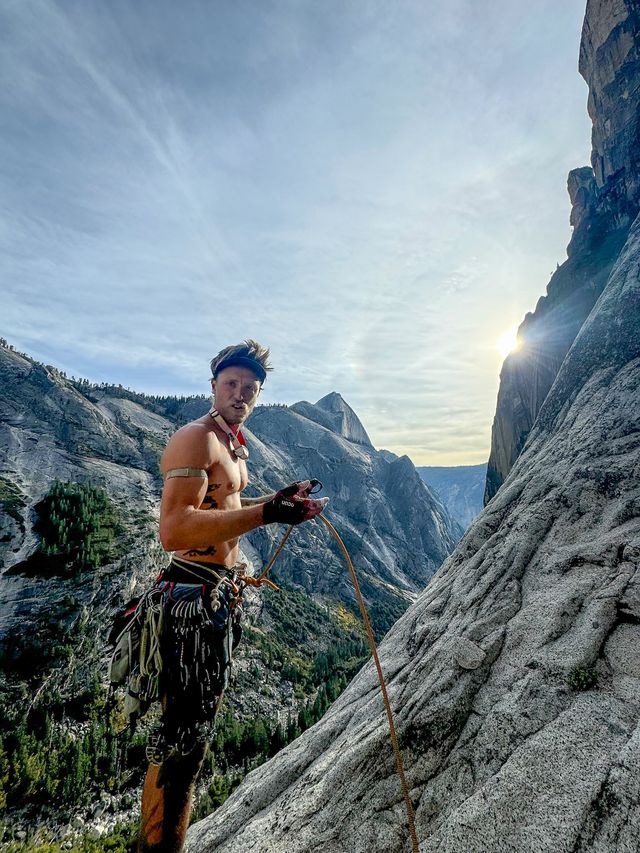
Tanner Wanish in Yosemite Valley with his COROS Heart Rate Monitor on his arm
Wanish and Vaill's attempt at the Quadruple was not just a test of physical endurance but also a mental and logistical challenge. Coordinating the timing, route planning, and energy management for four major climbs in a single day requires meticulous preparation and unwavering focus. The climbers relied on their extensive experience and knowledge of the routes to navigate the complexities and challenges of each climb.
How many times did you climb each route before you knew you could put it all together?
This was our 7th time climbing The Nose and I think the 5th on Half Dome, 3rd on Watkins and 2nd on Washington column (so one less than each of those numbers prior to the quad). We didn’t really have any guarantee of succeeding here, we just wanted to try hard and do our best, which we did! The 4th wall seemed like an obvious progression to the “in a day” valley challenge and we felt like we were ready to give it a shot. Our previous times showed us it was physically possible so the question came down to whether we could sustain for that long and with all the support we had, we got it done.
What did you learn from the record-breaking Triple last weekend that you carried over to this latest attempt?
I learned I need to consume about ten times more calories in order to not bonk first and foremost, which really improved the experience for the quad. We also learned that we had more than six hours to spare after the triple, which is why we felt like we needed to go for a 4th!

Tanner Checking His Progress on 1st climb
Every athlete has that inspirational spark, but tackling something as colossal as The Quad in 24 hours? The pair aimed for something epic, pushing boundaries and setting a new standard for future climbers.
Where do you draw your inspiration?
My inspiration comes from the people and the experience and varies based on the day, realistically. For this we were incredibly stoked and inspired to try it specifically for the opportunity to push the sport forward even an inch. It has been decades since something new like this has even been attempted and we felt like it was our turn to step up to the plate and try. Not because we had to, but because we felt like we were able to and thus had an obligation to try, both for the sake of Yosemite climbing history as well as the community that has established these walls in the first place.
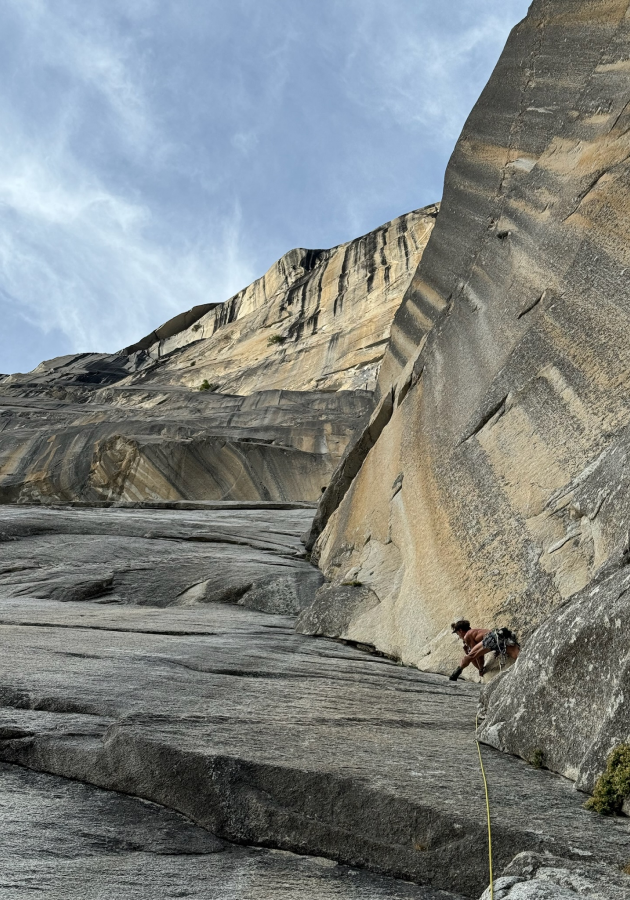
Tanner Climbing en route to the Quadruple
Inspiration alone won't carry an athlete to the finish line. There are tangible challenges the climbers faced as they attempted The Quad. Speed and climbing efficiency is part of the equation, but so is being able to sustain the physical rigors of the climbs. Athlete mental and physical health go hand in glove and technology is now a key component in how climbers prepare for big goals.
What are the specific challenges you faced with the Quadruple?
Fueling properly I think was the biggest challenge by far. We're basically doing ultramarathon endurance, technical climbing for 22 hours and it was really challenging to stay fueled properly when you're climbing that hard and long. We both had some stomach issues a few times and as a result had to skip a few planned snacks or meals which was rough, but expected. It was also the mental challenge of not knowing if it's literally possible for us to do in under 24 hours, but we were ok with the possibility of us going over that timeline as long as it was completed in a single push.
How has adopting technology and tracking changed your climbing?
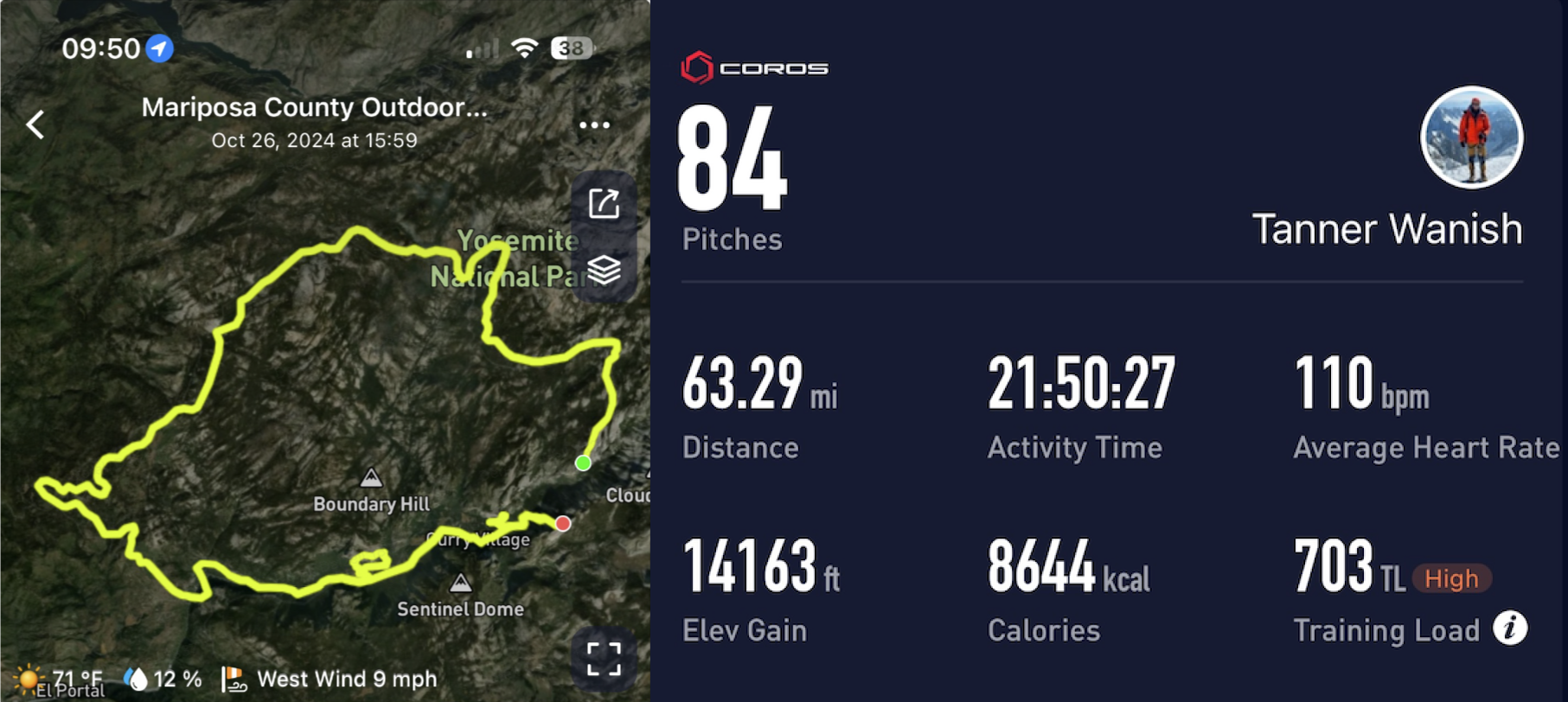
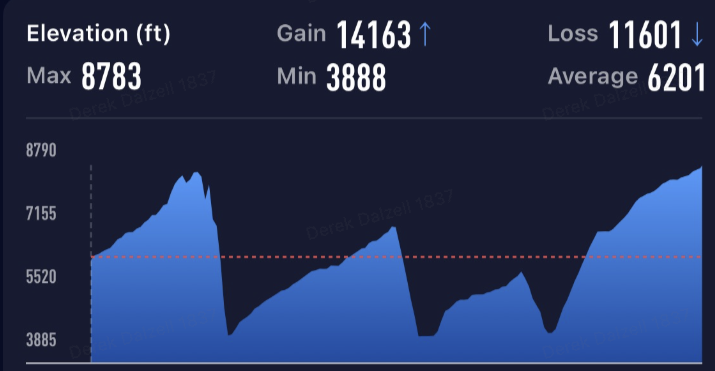
I am able to track my own progress much more accurately now, as well as my own training volume and intensity. I was pretty resistant to involving technology for a while because I enjoy the intuitional training model but for the past year I have been religiously monitoring my sleep and HRV and overall stats through the COROS app and its let me go bigger on days that I am objectively fit and fresh, as well as smaller on days where my body is telling me I have a little less to give than I would have thought.
Tanner and Michael completed the Yosemite Quad in a total time of 21:50. Taking a closer look, we can see the impressive vertical GPS tracking provided by their COROS VERTIX 2S.
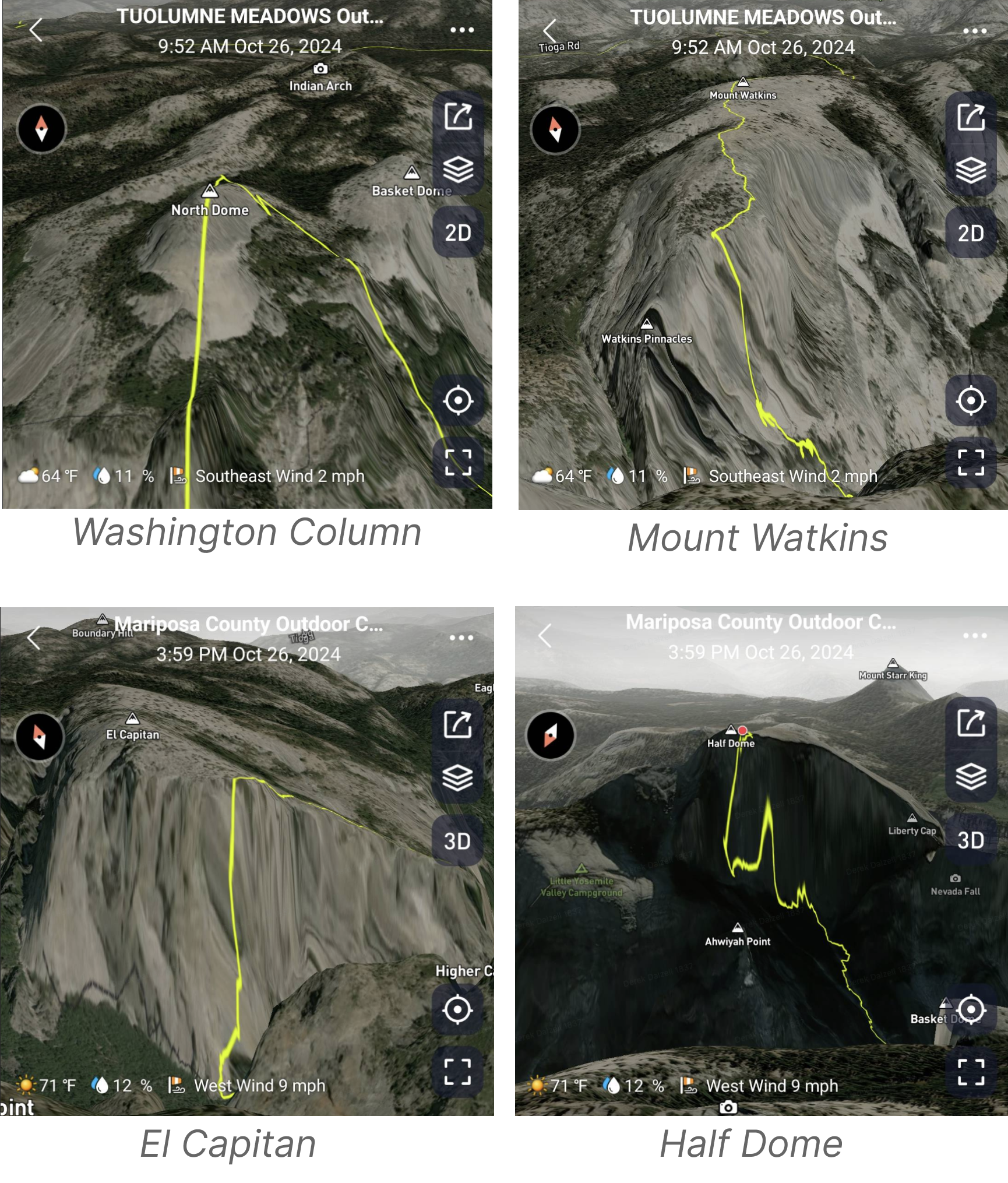
What does it mean to you, to have a first ascent tied to your name? What do you think it means for climbing as a whole to have these first ascents in modern day?
I cried for the first time in years on the summit of Half Dome when the reality started to hit that we had just made history. It's not a motivator for me personally to be known or anything but to realize that we will have the first ascent of the biggest linkup in Yosemite history is absolutely insane for both of us. We are just a continuation of the pioneers that came before and established these routes and previous linkups and it's surreal to think we will be remembered for something so meaningful to us both. I would genuinely love to see this light a fire in the climbing community again and have others continue to push the sport even more. There are so many strong and stoked climbers out there that are so capable, all you gotta do is try!
The achievement is hard to comprehend, as some of the walls they completed take days for an average climber to ascend. While most of us won't be able to complete what they have, we can all learn from the experience and use it as motivation for our own goals.
What suggestions would you have for other climbers looking to get into the ultra-endurance side of climbing?
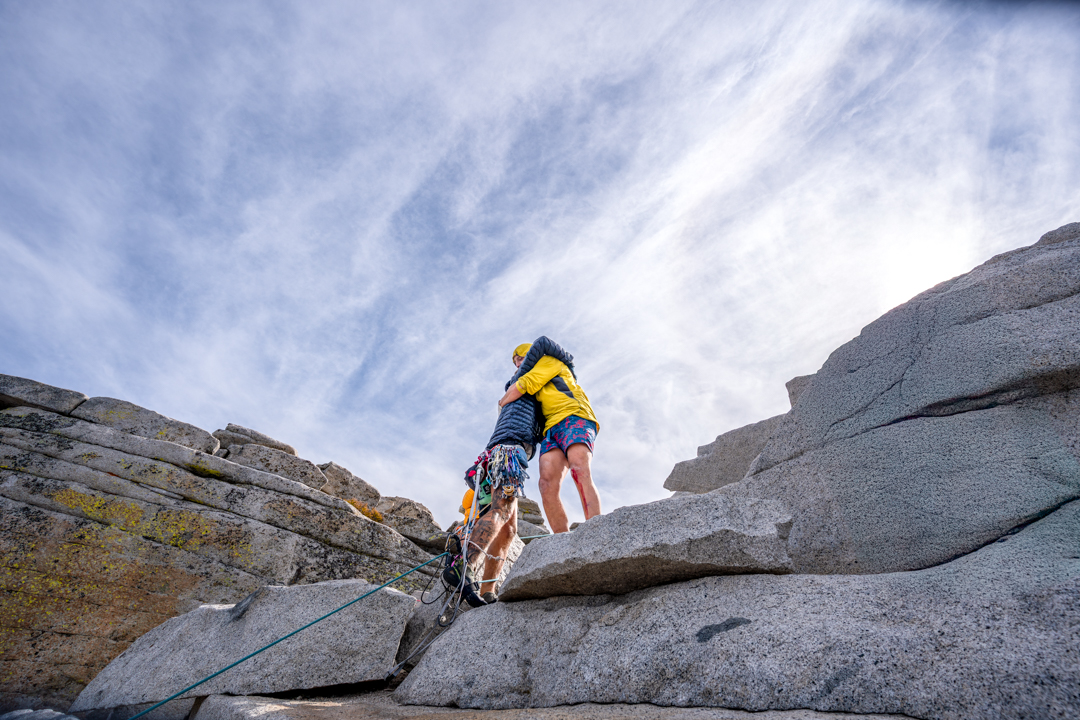
Log as many pitches on real rock as you can. Climb stuff that seems too hard when you have the opportunity. Find partners that are stronger than you to shadow and learn from. Go big when you can afford to and pursue what you’re passionate about, whatever style of climbing that may be. We could never do this if we didn’t love it so much, it’s sincerely very challenging but so rewarding. Make sure you are being safe above all else because there’s objectively more risk when climbing fast so build a strong base and master the basics before you try to get fancy. And if you’re not failing routinely, it means you’re not pushing!

/filters:quality(90)/fit-in/970x750/coros-web-faq/upload/images/84fd39bdf5c5e8b7a56a81f144f7e06a.png)